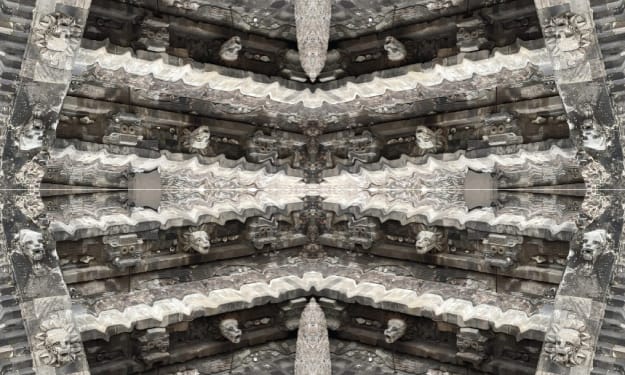Types and Advantages of Stone Crusher
Setting up a stone crusher plant requires significant investment and careful planning. Let's discuss some key factors to consider for a successful investment in this sector

Introduction to Stone Crushers
Stone crusher, also known as rock crushers, are machines used to reduce the size of rocks and stones in aggregates production, construction material recycling applications, and mining operations. They are indispensable machines utilized globally in various sectors. In this article, we will discuss the key types of stone crushers, their manufacturing technologies and applications.
Common Stone Crusher Types
There are four main types of Stone Crusher in use across various industries. Their selection depends on the required reduction ratio and production capacities.
Jaw Crusher
Jaw crushers work based on the principle of compressive force applied between a fixed and a moving surface covered with manganese jaw plates. They are suitable for primary and secondary sized reduction of hard stones or ores and can reduce 600-1000mm size stones to 10-30 mm in a single stage. They have up to 60 times bigger reduction ratio than a roll crusher.

Cone Crusher
Cone crushers use a spinning cone that gyrates in the crushing chamber to crush rocks by compression between a moving piece of steel against a stationary piece. They can be used as secondary or tertiary crushers after jaw crushers for fine crushing applications. Cone crushers provide 15-35 times greater reduction than a single roll crusher.
Impact Crusher
Impact crushers utilize the top-hammer principle to crush rock materials. They have a high reduction ratio in a single pass, up to 15:1, which makes them ideal for shaping and cubical products. Horizontal shaft impactors are used as primary, secondary as well as tertiary crushers depending on the required particle size distributions and production capacities.
Vertical Shaft Impact (VSI) Crusher
VSI crushers employ a high-speed spinning rotor and stationary anvils to crush materials through compression. They can produce uniformly shaped and sized cubical aggregates for asphalt and concrete and are suitable as final crushers. Modern VSI crushers can deliver up to 15 times more throughput than a conventional impactor crushing the same material at the same reduction ratio.
Rock-on-Rock Impact Crusher
Rock-on-rock impact crushers are mainly used as primary crushers and are suitable for processing soft and medium-hard materials like limestone. They deliver higher throughput than jaw and cone crushers and require low power and less maintenance. However, they produce higher proportions of fines below the closed-side setting.
Liner Wear in Stone Crushers
All types of impact, compression, and attrition crushers employ wear resistant alloy steel liners for protection of the crushing chamber against abrasion by the feed material. Depending on feed conditions, these liners may last anywhere from three months to over a year before requiring replacement.
Common liner profiles include manganese alloy steel with 16-22% manganese inserts, high chrome plates with up to 22% chromium, or composite plates with high chrome faceplates backed with steel. Composite and high chrome plates last longer compared to manganese plates in highly abrasive applications.
Recent Developments in Stone Crusher Design
Recent developments in crushing technology focus on automating operations, improving energy efficiency and reducing maintenance downtime. Here are some notable trends:
• Fully automatic hydraulic crushing chambers for on-the-fly closed side setting adjustment as per feed conditions and desired product size.
• Direct drive electric motors replacing diesel engines for up to 30% fuel savings and lower emissions.
• Advanced hydraulic and electrical controls for remote monitoring and precise process control.
• Auto lube systems for centralized automatic lubrication of grease points reducing maintenance time.
• Heavy duty steel designs with lifting eyes and transport pins for quick on-site assembly and relocation between jobsites.
• Multi-sensor condition monitoring systems for real-time equipment health tracking and predictive maintenance.
• Machine learning-based algorithms for optimized crushing circuit configuration based on material characterization.
Applications of Stone Crushers
Stone crushers have wide applications in following industries:
Aggregate Production
All types of crushers are used as primary, secondary or tertiary crushers to produce aggregate for concrete mixing, asphalt laying, mortar preparation and landscaping. Aggregate crushing plant layout is optimized based on the quarry type, required size distributions and production targets.
Mining Operations
Crushers are indispensable in mining industries like iron ore mining, copper mining, bauxite mining and coal mining. They are deployed for mining and processing of minerals, precious metals and industrial raw materials. Mobile crushers are popular for mining applications requiring frequent relocation.
Construction Waste Recycling
Crushers play a key role in C&D (construction & demolition) waste recycling by reducing materials like concrete debris, bricks, tiles, and construction ceramic wastes into reusable aggregate fractions for road sub-bases and backfills. This promotes sustainability in infrastructure projects.
Manufacturing Industries
Crushers produce aggregates suitable for manufacturing applications including cement plants, power plants, metallurgical plants, glass manufacturing plants and more. They also crush raw material for brick, block and tile manufacturing.
Advantages and Cost Effectiveness
Compared to drilling and blasting, stone crushing using optimized mechanical crushers delivers following benefits:
• Uniformly shaped cubical aggregates preferred by concrete, asphalt and precast industries.
• Higher volume output and dimensional precision.
• Lower powder fines generation suitable for dust control.
• Lower energy consumption and safer operations than drilling and blasting.
• Quick return on investments - crushers pay off within 18-24 months of commissioning.
Globally, stone crushing accounts for over 10% of construction material costs. By right-sizing crushers as per application and optimizing crusher circuits, up to 25% cost savings on aggregate production can be achieved over the project lifecycle.
About the Creator
Enjoyed the story? Support the Creator.
Subscribe for free to receive all their stories in your feed. You could also pledge your support or give them a one-off tip, letting them know you appreciate their work.





Comments
There are no comments for this story
Be the first to respond and start the conversation.